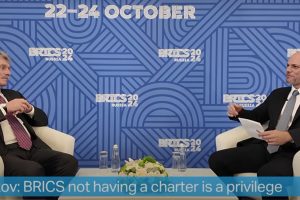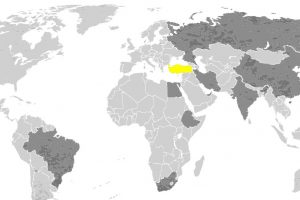Chevron has agreed to buy Noble Energy for $13bn including debt in the oil and gas industry’s first big deal since geopolitical tensions and the global pandemic sparked this year’s crude price collapse.
The deal will allow the oil giant to strengthen its position in the Eastern Mediterranean.
Under the terms of the all-share tie-up, which values the independent oil and gas producer’s equity at $5bn, investors will receive 0.1191 shares in the supermajor for each one they hold in its smaller US rival. The transaction has a total enterprise value of $13bn including debt, is $13 billion.
The giant was attracted first by Noble’s gas assets. This could be promising for breaking the deadlock on the rocky road to monetising the region’s finds
The timeline of Chevron’s $5bn takeover offer for US independent Noble Energy makes for interesting reading, particularly for the nascent Eastern Mediterranean gas industry. The major’s announcement of the deal in July focused on both Israeli and US Permian and DJ basin assets, but an August SEC filing makes it clear that its interest was first in East Med gas.
Chevron’s general manager for M&A, Frank Mount, first approached a Noble executive in October, the filing records, to say that it “had been monitoring Noble Energy’s progress in the Eastern Mediterranean”. Mount then “indicated that Chevron was contemplating entry into the upstream sector in Egypt and indicated potential interest in regional cooperation” at a follow-up dinner in December.
East Med deal
The conversation then moved on to whether “a transaction between Chevron and Noble Energy in the Eastern Mediterranean would be feasible”, with Noble advising that it “was not interested in a complete sale of its Eastern Mediterranean assets, but was potentially considering a partner to both reduce Noble Energy’s concentration risk and help accelerate the next phase of capital investment for growth needed in the region”.
In February, Mount planned to be in the East Med “to announce a Chevron exploration agreement with Egypt” and asked to visit Noble’s Leviathan field during his trip. While Noble refused on the grounds that such a visit “could be disruptive to Noble Energy operations and lead to regional speculation”, the two firms agreed to “a mutual confidentiality agreement prior to holding more granular discussions, and that such discussions would involve a US-based mutual information sharing process to commence following Chevron’s Egypt announcement”.
The agreement was signed in early March “to permit the parties to engage in discussions about each other’s Mediterranean assets”. Further discussions took place between Chevron and Noble executives on 23 March and 9 April, but again these were focused purely on East Med assets.
In mid-April, Mount “indicated that Chevron was potentially interested in creating a regional partnership with Noble Energy in the Eastern Mediterranean”. The partnership “would need to be at least 50pc owned by Chevron,” although the firm “preferred a higher ownership percentage or a full acquisition”. A Noble executive was asked to “to explore the possibility for such partnership with Noble Energy management and respond with Noble Energy’s preferred structure and residual ownership before discussing valuation”. “Following this meeting, Noble Energy management engaged in a financial review of a sale of an interest in Noble Energy’s Eastern Mediterranean,” the filing continues.
It was only on 12 May that—following a late April board meeting when Noble concluded that it did not want to sell 50-100pc of its East Med operations, but that it “should be proactive in identifying and considering strategically impactful transactions”—that a full takeover of Noble came onto the table. And it was Noble’s COO Brent Smolik soliciting Chevron’s interest, not the other way round.
There then followed more than two months of back-and-forth over value—mainly on what premium, if any, the major would pay over Noble’s market capitalisation—before Chevron announced on 21 July that it had agreed takeover terms with Noble. In short, Chevron’s interest in Noble’s East Med assets came first, its takeover decision second.
Problems to solve
At first glance, the motivation is not that surprising. The last US indie to catch Chevron’s eye, Anadarko, had significant gas holdings in Mozambique. The major’s LNG project pipeline beyond ramping up its Gorgon and Wheatstone facilities in Australia looked light, and analysts saw logic in the move.
Noble’s East Med gas holdings look tempting on paper—an almost 40pc stake in the 605bn m³ Leviathan field and 25pc in the 318bn m³ Tamar field in Israel; and a 35pc share of the 129bn m³ Aphrodite find in Cyprus. But the production numbers are more problematic.
Tamar produces close to its nameplate capacity of over 11bn m³/yr, supplying, in the main, the Israeli domestic market and limited exports to a Jordanian fertiliser manufacturer. Leviathan began producing at the start of this year with a planned first-phase capacity of 12bn m³/yr.
But its main sales contracts are with just a handful of Israeli industrial and utility end-users, a 3bn m³/yr deal with Jordan’s state power firm and an agreement for c.3.5bn m³/yr—albeit increasing further from 2022—with Egyptian conglomerate Dolphinus Holdings through the East Mediterranean Gas pipeline. Its customer base is well short of production capabilities.
Aphrodite also has an end-user problem for its potential 8.3bn m³/yr output. The Cypriot and Egyptian governments have signed a memorandum of understanding on piping its gas to Egypt. But Egypt is exploring for more gas itself, and Covid-19 is also likely to put a dent in some of the more ambitious forecasts of its domestic demand growth, a market that has, in any case, some payability question marks. Its Idku LNG terminal has also been struggling to produce cargoes at a competitive price from close-to-shore fields—a stark reminder that expansion trains and gas piped from abroad could be economically challenging.
The problem is not confined to Noble’s assets—Cyprus and Israel have other finds and more East Med exploration is slated—nor will it get any easier to solve. Israel and its neighbours may well grow their domestic markets, but this will likely be overwhelmed by additional production capacity. Leviathan’s second phase will add 9bn m³/yr, Tamar’s a similar volume. So, there is almost 30bn m³/yr of gas from Noble projects with no obvious home, even before other Cypriot discoveries jockey to get into production.
One or more of five large-scale export options is required to unlock the full potential of the East Med Gas finds: pipelines to additional brownfield trains at Egypt’s Damietta and Idku LNG terminals; floating LNG; a Cypriot onshore terminal; pipelines into the Turkish network and on into Europe; or the Eastern Mediterranean Gas pipeline into Italy via Cyprus and Greece.
So, which of these options might Chevron be counting on to make a success of its Noble purchase? Chevron CEO Mike Wirth played his cards close to his chest in the conference call following the deal’s announcement. “When you have got a large, low-cost resource base like this proximate to large economies, we will find ways to move the gas to market in a manner that is competitive” is as much as he was prepared to offer.
And this may not simply be caginess, suggests Jason Gammel, equity analyst at investment bank Jefferies. “Chevron may not have any specific plans for future expansion,” he says. “It may just be looking at Noble’s [currently producing] portfolio as having completed its major capex programme and is generating free cash flow (FCF).
“You also need to look at the price paid. Noble has FCF out of its US and West African assets too—those are fairly attractive production streams for what Chevron is paying for them. The future East Med upside may be just a nice option to have.” So, while the Chevron deal is a boon for East Med gas, it may be too soon to declare it the magic bullet that unlocks the monetisation puzzle.






